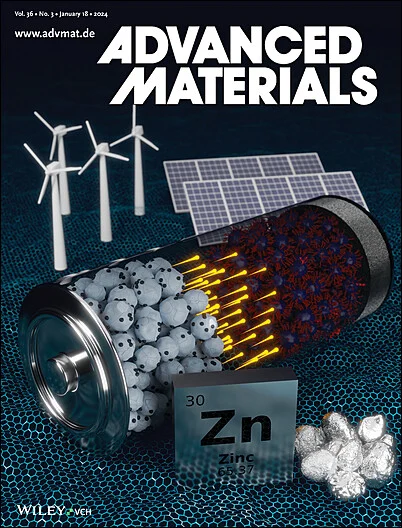Surface Engineering Enabling Efficient Upcycling of Highly Degraded Layered Cathodes
IF 27.4
1区 材料科学
Q1 CHEMISTRY, MULTIDISCIPLINARY
引用次数: 0
Abstract
Direct recycling of cathode materials has attracted phenomenal attention due to its economic and eco-friendly advantages. However, existing direct recycling technologies are difficult to apply to highly degraded layered materials as the accumulation of thick rock-salt phases on their surfaces not only blocks lithiation channels but also is thermodynamically difficult to transform into layered phases. Here, a surface engineering-assisted direct upcycling strategy that reactivates the lithium diffusion channels at the highly degraded cathode surfaces using acid etching explored. Acid can selectively remove the electrochemically inert rock-salt phases on the surface while simultaneously dissociating the degraded polycrystalline structure to single crystals, thereby reducing the thermodynamic barrier of the relithiation process and enhancing the stability of the regenerated cathode. This strategy can restore the capacity of highly degraded LiNi0.5Co0.2Mn0.3O2 from 59.7 to 165.4 mAh g−1, comparable to that of commercialized ones. The regenerated cathode also exhibits excellent electrochemical stability with a capacity retention of 80.1% at 1 C after 500 cycles within 3.0–4.2 V (vs graphite) in pouch-type full cells. In addition, the generality of this strategy has also been validated on Ni-rich layered materials and LiCoO2. This work presents a promising approach for direct recycling of highly degraded cathode materials.

求助全文
约1分钟内获得全文
求助全文
来源期刊

Advanced Materials
工程技术-材料科学:综合
CiteScore
43.00
自引率
4.10%
发文量
2182
审稿时长
2 months
期刊介绍:
Advanced Materials, one of the world's most prestigious journals and the foundation of the Advanced portfolio, is the home of choice for best-in-class materials science for more than 30 years. Following this fast-growing and interdisciplinary field, we are considering and publishing the most important discoveries on any and all materials from materials scientists, chemists, physicists, engineers as well as health and life scientists and bringing you the latest results and trends in modern materials-related research every week.
 求助内容:
求助内容: 应助结果提醒方式:
应助结果提醒方式:


